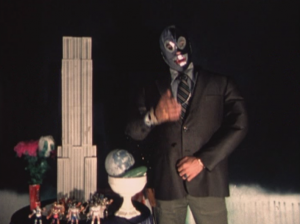
"Siete cortometrajes de Maris Bustamante y Rubén Valencia, integrantes del No Grupo, que indican el acercamiento de artistas plásticos al formato súper 8. Los trabajos del No-Grupo tendieron a hacer una reflexión a la vez lúdica y crítica sobre la naturaleza del arte" Superocheros.
"Seven short films made by Maris Bustamante and Rubén Valencia, members of the No Group, that indicate the interest of artists in the plastic arts to use the super 8 format. The works of the No Group were usually a playful and critical reflexion on the nature of art" Superocheros.
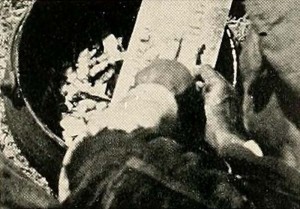
"Porpoise Oil presents a cleverly planned and charming story that shows how the Indians of the upper St. Lawrence region live today and how their ancestors obtained oil from the porpoise of the neighboring bays. Dr. Leighton was fortunate enough to find an old Indian who, in his younger days, had been a champion porpoise hunter and the picture tells in Kodachrome how the fish was shot and the oil tried. This constitutes an important document of Indian craft that, otherwise, in time would be lost to the world. A touch of humor throughout and a surprise ending serve to spice the film and to make it the excellent study that it is instead of a routine record film. The continuity is well developed and the photography is of good quality." Movie Makers, Dec. 1937, 630.
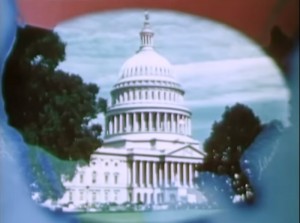
"Bituminous coal is the major actor in The Power Behind the Nation. This sound on film color movie, made by Waldo E. Austin for the Norfolk and Western Railway Company, shows effectively the tremendous part played by soft coal in the development of the nation. The picture is well filmed and thoroughly integrated by an excellent narrative, while lead and end titles are appropriately double exposed on shots of moving trains, which serve to drive home the point that the railroad is the important link between the mine and the consumer. Exceedingly fine sequences of coal mining and well handled shots of the railroad equipment are high points. This film is a fine example of an industrial motion picture produced without the excessive equipment and appropriations sometimes thought to be necessary for such an effort. " Movie Makers, Dec. 1940, 604.
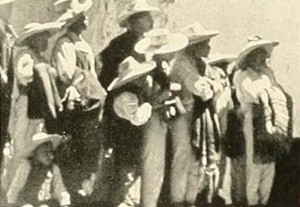
"One comes from a screening of Primitive Patzcuaro, by Ralph E. Gray, with an overwhelming impression of pure beauty. Here, in compositions which often echo the Old Masters in their warmth of color and satisfying balance, an amateur movie maker has turned his camera on the simple life about him and found it pleasing. One after another, the magnificent scenes and sequences bring from the spectator that involuntary expression of deep pleasure which is ambrosia even to the great of amateur movies. In Primitive Patzcuaro, Mr. Gray has portrayed, with leisure, the life of the Tarascan Indians, remote from civilization in a rarely visited section of Mexico. Although magnificent in its color studies, the film is abundant in human interest as well; in portions devoted to the bright native dances and religious ceremonies, it presents a series of tableaux that are breath taking in their effectiveness." Movie Makers, Dec. 1937, 626-627.
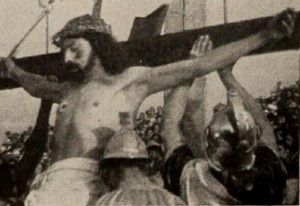
"It is a platitude that there is more in Mexico than meets the eye. In Quaint Old Mexico, however, Guy Nelli proves that there is far more in Mexico than usually meets the camera. Mr. Nelli presents the gradual awakening of Mexico, as the farmers drive their produce to market, with a startling sense of early morning atmosphere; market scenes are developed lucidly and effectively. The high peak of the film is reached with a most remarkable sequence of religious festival shots, as virtually an entire village re-enacts the Stations of the Cross. The intense religious emotion evident in these scenes has rarely been caught for the screen. Mr. Nelli's film is outstanding for its fresh approach and, above all, for the natural and casual quality of its shots." Movie Makers, Dec. 1946, 488.
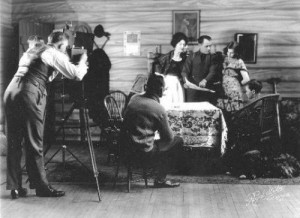
"A Race for Ties" tells the story of a sawmill owner, Joe Atwood, and his race against a large timber company, headed by U. Cheetem, to sign an exclusive contract for railway ties. In addition to a plot driven by one of the region’s staple industries (the lumber industry), the film highlights the scenic nature of the region" - Michel S Beaulieu, Women Film Pioneers Project.
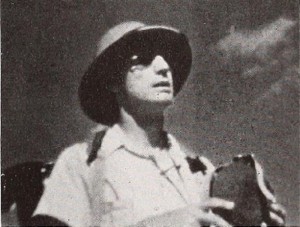
"Rainbow Fantasy, in the words of Charles C. Hammack, is "an attempt to produce — not a conventional travelog — but more a story of adventure, a hiking adventure to what is probably one of the least visited of our national monuments, Rainbow Bridge, in southeastern Utah." In achieving this goal, Mr. Hammack has been largely and creditably successful. For him and his young wife, Rainbow Bridge takes on the aura of a lost horizon, a Shangri La protected from the outside world by the blistering desert heat and the brutal desert rocks. He brings this overtone of feeling to his film, both through his imaginative camera treatment of the subject and the intentionally dramatic acting of the two travelers. Mr. Hammack's is a new name in Ten Best competition, but it is one which we believe will be heard again."Movie Makers, Dec. 1943, 478.
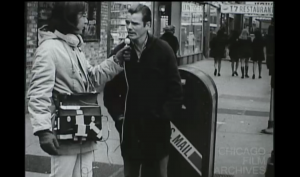
"RATAMATA is a portrait of the diverse opinions of Chicagoans (ranging from high school students to habitual mayoral candidate Lars Daly) as they reflect on the general state of affairs in America, the war in Vietnam, social and racial conflict, freedom and personal liberty, happiness, and social justice." Chicago Film Archives
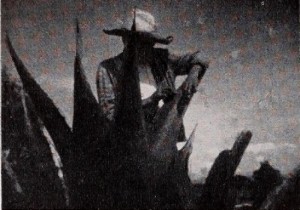
"Alan Probert has confined his study of Mexico to the primitive Otomi Indians. With startling clarity and a fine cinematic eye for detail, he presents the tribal group in a series of sketches that reveal the age old customs of their forefathers still in daily use — sowing and reaping, spinning and weaving, trading and worshipping. Remnants Of The Past is an expertly filmed factual account of the subject, which would have gained considerably from greater unity and a stronger ending." Movie Makers, Dec. 1948, 494.
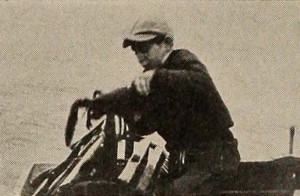
"The story, older than the craft of lobster fishing, of a ten year old boy earning his own first few pennies is told beautifully and sensitively in Riches from the Sea, by T. J. Courtney. As simple and human as the life of those it pictures, this film captures the spirit of the young fisher boy as he goes about his work of baiting and dropping lobster pots. They are his own, just given by his father. The money he makes from selling the lobsters he catches, some of which he boils on the beach, is also his own. Finally, when the last one is purchased by tourists along the dusty road and the boy races to the village, clutching his coins, to buy the coveted store window toy, the picture swells to its climax, fully equal to the importance of the occasion in the youngster's life. Lovely angles and expert composition bring beauty in black and white to the photography, and the acting, by Philip Boutilier and his little sister Lorraine, of Seabright, Nova Scotia, is unaffected and agreeable. This photoplay illustrates how completely the locale and life of an interesting community can be conveyed by threading it on a simple story of human nature." Movie Makers, Dec. 1938, 597.
Total Pages: 18